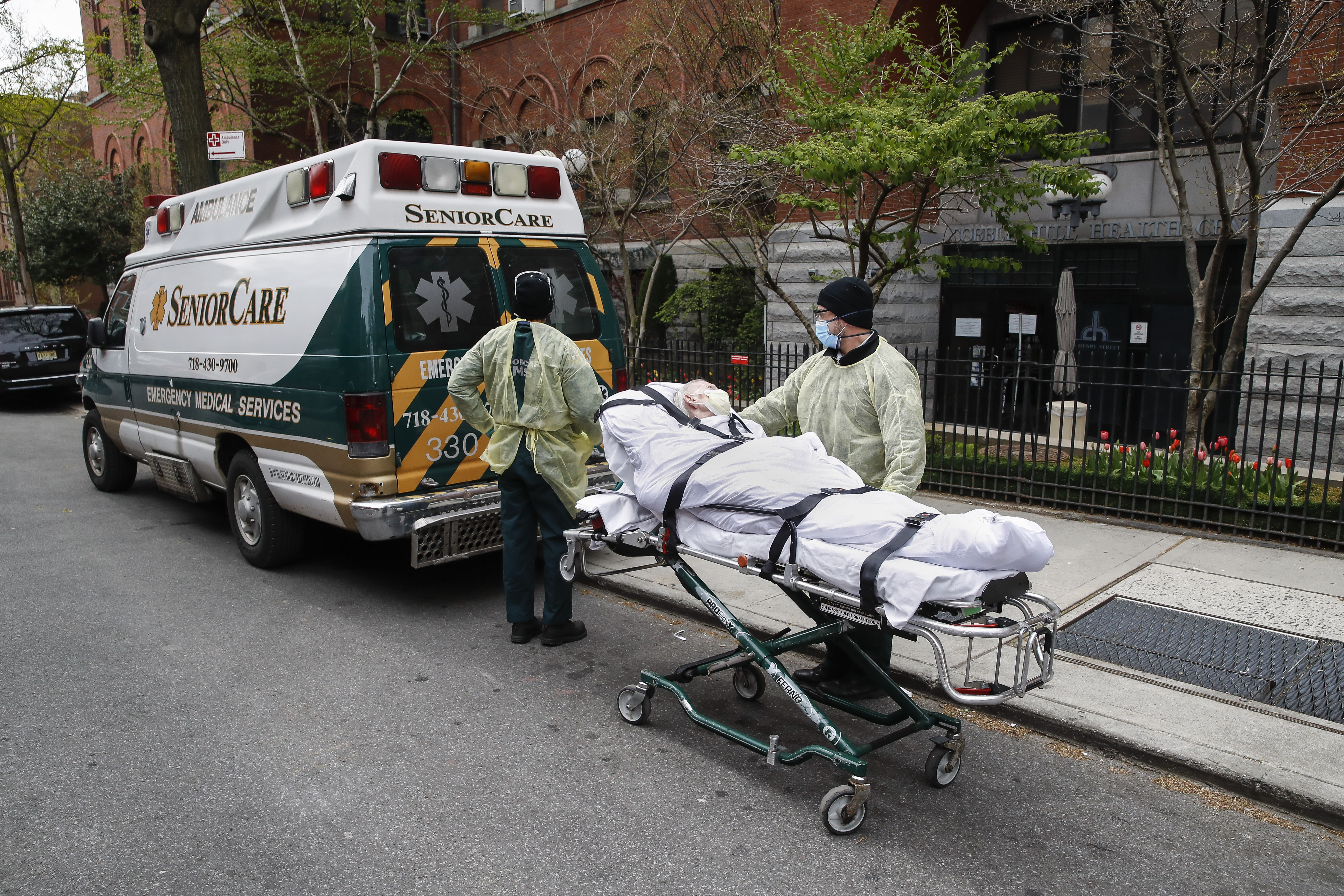Coroners in some parts of the country are overwhelmed. Funeral homes in coronavirus hot spots can barely keep up. Newspaper obituary pages in hard-hit areas go on and on. Covid-19 is on track to kill far more people in the US this year than the seasonal flu.
But determining just how deadly the new coronavirus will be is a key question facing epidemiologists, who expect resurgent waves of infection that could last into 2022.
As the virus spread across the world in late February and March, the projection circulated by infectious disease experts of how many infected people would die seemed plenty dire: around 1 per cent, or 10 times the rate of a typical flu.
But according to various unofficial Covid-19 trackers that calculate the death rate by dividing total deaths by the number of known cases, about 6.4 per cent of people infected with the virus have now died worldwide.
In Italy, the death rate stands at about 13 per cent, and in the US, around 4.3 per cent, according to the latest figures on known cases and deaths. Even in South Korea, where widespread testing helped contain the outbreak, 2 per cent of people who tested positive for the virus have died, recent data shows.
These supposed death rates also appear to vary widely by geography: Germany’s fatality rate appears to be roughly one-tenth of Italy’s, and Los Angeles’s about half of New York’s. Among US states, Michigan, at around 7 per cent, is at the high end, while Wyoming, which reported its first two deaths this week, has one of the lowest death rates, at about 0.7 per cent.
Virology experts say there is no evidence that any strain of the virus, officially known as Sars-CoV-2, has mutated to become more severe in some parts of the world than others, raising the question of why there appears to be so much variance from country to country.
Determining death rates is especially challenging in the midst of a pandemic, while figures are necessarily fluid. Fatality rates based on comparing deaths, which are relatively easy to count, to infections, which are not, almost certainly overestimate the true lethality of the virus, epidemiologists say. Health officials and epidemiologists have estimated there are five to 10 people with undetected infections for every confirmed case in some communities, and at least one estimate suggests there are far more.
On top of that, deaths lag infections. The thousands of people with Covid-19 who died this week in the US were most likely infected as far back as a month ago. So as the number of new cases reported begins to fall in hard-hit places like New York City, the death rate will almost certainly rise.
“To know the fatality rate you need to know how many people are infected and how many people died from the disease,” said Ali H. Mokdad, a professor of health metrics sciences at the Institute for Health Metrics and Evaluation.
“We know how many people are dying, but we don’t know how many people are infected.”
In fact, even the number of people dying is a moving target. Covid-19 deaths that happen at home appear to be widely underreported.
And New York City increased its death count by more than 3,700 on Tuesday, after officials said they were now including people who had never tested positive for the virus but were presumed to have died of it.
But the missing data on deaths in the deaths-to-infections ratio is still almost certain to be dwarfed by the expected increase in the denominator when the total number of infections is better understood, epidemiologists say.
The statistic typically cited by mayors and governors at Covid-19 news conferences relies on a data set that includes mostly people whose symptoms were severe enough to be tested.
Epidemiologists call it “severity bias”. It is why the fatality rate in Wuhan, China, where the outbreak began, was reported to be between 2 per cent and 3.4 per cent before it was revised to 1.4 per cent, and it may yet be lower.
One intriguing case study for epidemiologists looking for the true fatality rate is the Diamond Princess cruise ship, which became a kind of natural experiment when nearly all of its 3,711 passengers and crew members were tested for the coronavirus after an outbreak on board.
The ship’s “case fatality rate”, which included only those who showed symptoms, was 2.6 per cent, according to a study by researchers at the London School of Hygiene and Tropical Medicine, while the “infection fatality rate”, which included those who tested positive yet remained asymptomatic, was 1.3 per cent.
(A cruise ship, in which people are in a confined space, is not representative of the more dynamic situation in cities). The known number of coronavirus cases worldwide is about 2 million, and at least 127,000 of those patients have died. The US has an estimated 600,000 reported cases and more than 25,000 deaths, the most in the world.
But many people infected with the virus have no symptoms, or only mild ones, and appear in no official tally.
Facing a shortage of tests to confirm who has the disease and who does not, and fearing a shortage of ICU beds, hospitals in some areas of the US have declined to test or admit people whose oxygen saturation is above 90 per cent.
Whether a particular locale tests people with even mild symptoms is a key factor in determining how many people were infected, but testing capacity has been limited in many places.
“People with mild symptoms, I just send them home,” said Amesh Adalja, a senior scholar at Johns Hopkins Center for Health Security.











